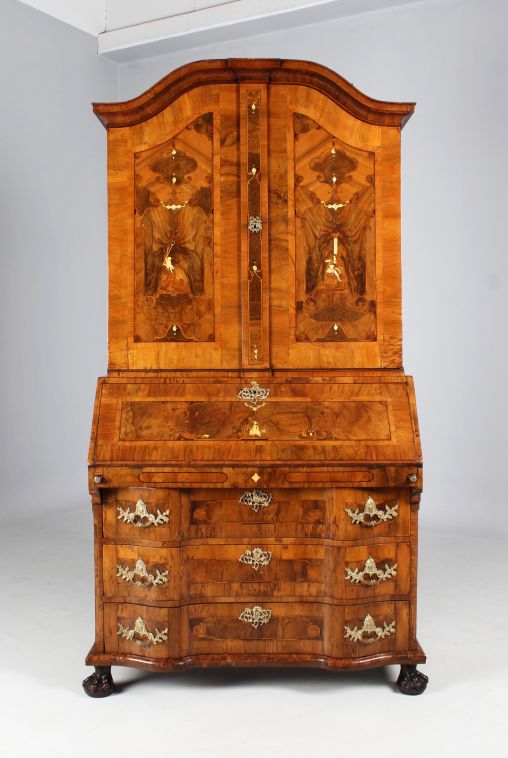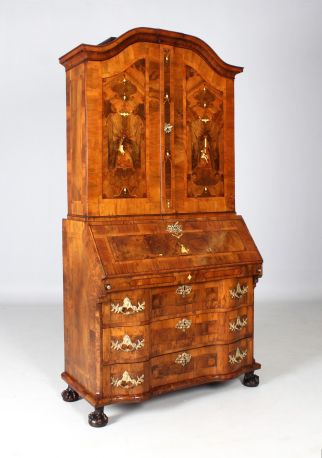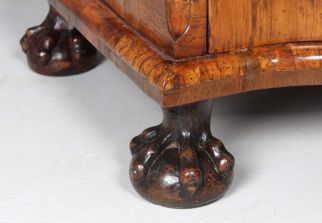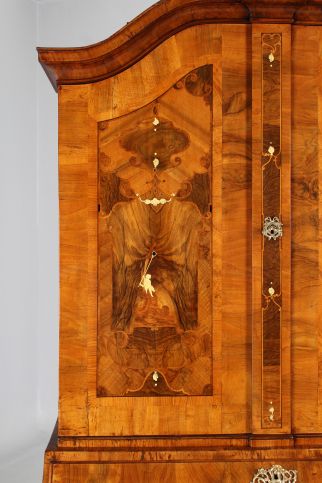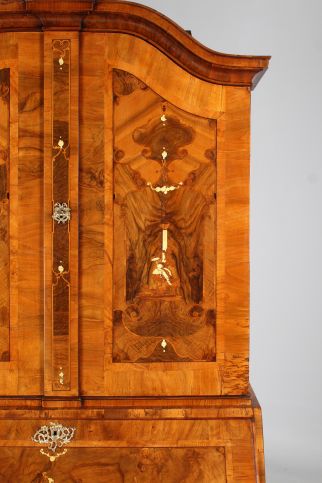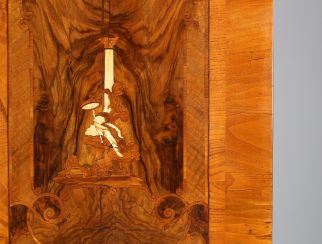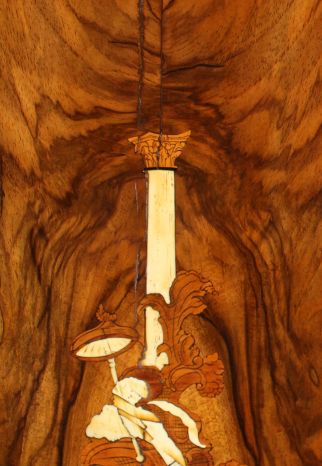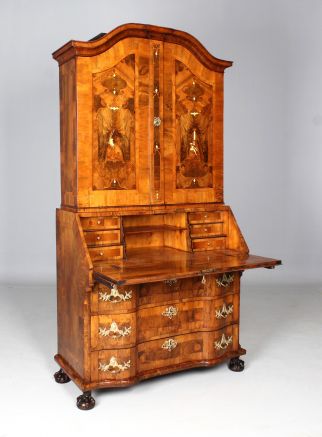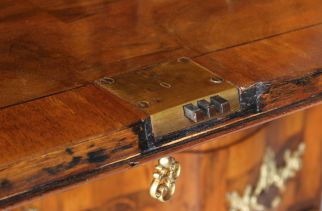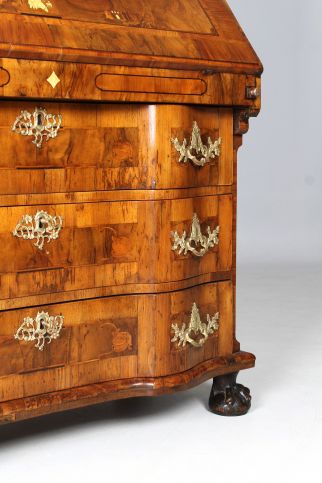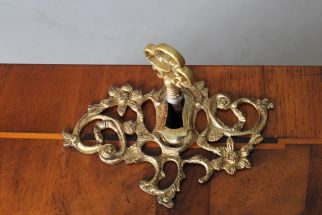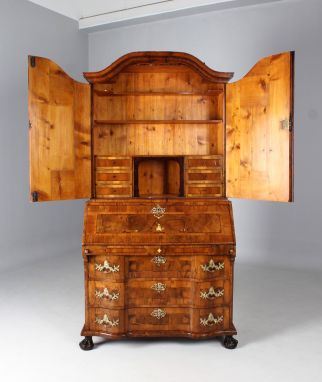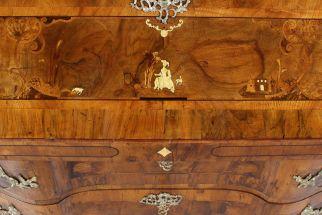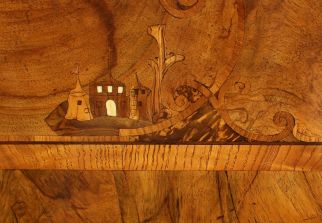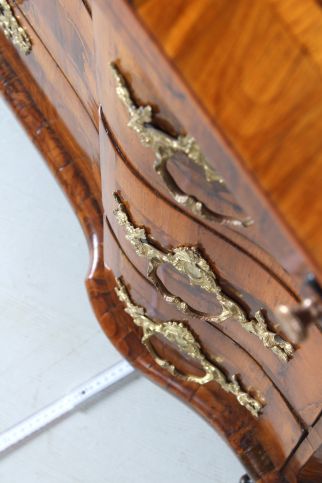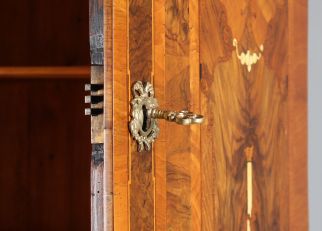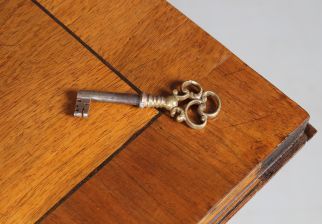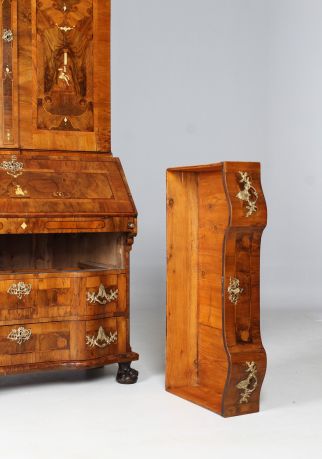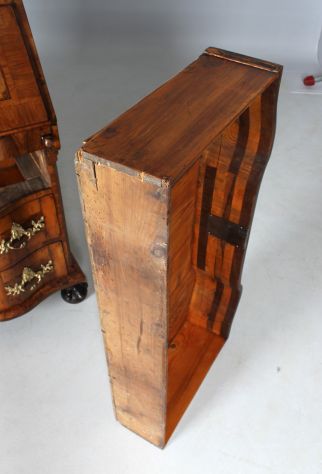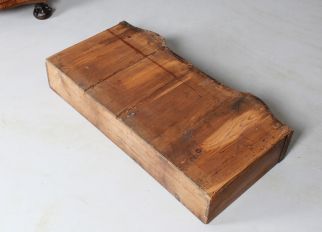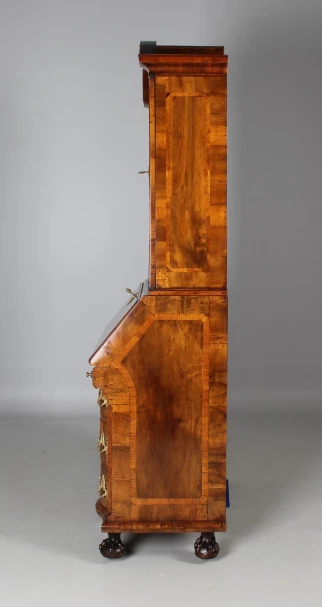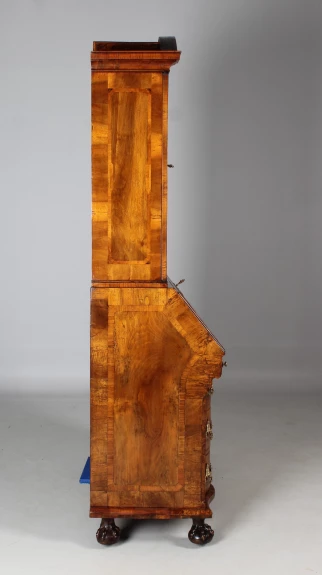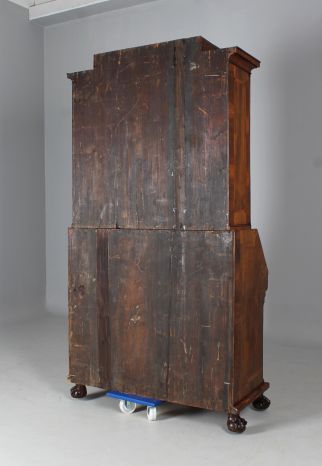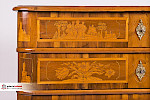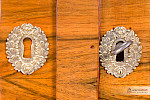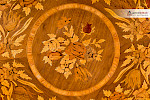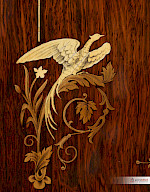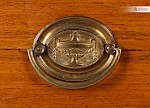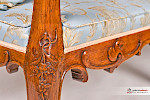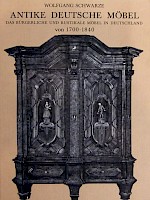Baroque top secretary with ivory inlays
Brunswick
Walnut a.o.
Baroque around 1750
Dimensions: H x W x D: 215 x 119 x 56 cm
Description:
Beautiful, slender writing cabinet from the Lower Saxon Baroque around 1750-60.
Two-part furniture corpus standing on so-called "claw on ball" feet.
The lower part consists of three large drawers and the sloping flap above. Typical for the Brunswick design is that the drawers are quite strongly curved, but the writing part is built straight on top and thus does not follow the shape of the base. Since there is no top here for the writing section to rest on, the work surface is supported by two pull-out ledges. This is also typical for the area, some nice comparative types can be found at [Wolfgang Eller - Schreibmöbel von 1700-1850 ab S. 215].
Inside we find six smaller drawers and a large open compartment.
The two-door top of the piece of furniture is discreetly curved towards the top. Behind the pediment is a three-tiered pedestal for displaying pitchers, vases or the like.
Here, too, we find six small interior drawers.
The piece of furniture is veneered in walnut with elaborate marquetry in ash, maple, bog oak and ivory.
The fittings, although appearing silver in some photographs due to the reflection of the flash when photographed, are bronze with some very nice preservation of the original gilding.
Points of interest:
Not all "Brunswick" furniture was actually built in Brunswick. Enclosed is a quoted explanation from [Heinrich Kreisel - The Art of German Furniture Late Baroque and Rococo p. 270 ff].
Brunswick furniture has become a household name, unlike some other perhaps equally important places of furniture production. F. Fuße dedicated a widely used art-historically based monograph to it as early as 1925, at a time, therefore, when furniture was only beginning to be included in the field of art historical consideration in Germany.
On the other hand, the courtly furniture of Brunswick was of such high quality and so characteristic that anonymous pieces in private ownership or in the fluctuating art trade, which bore the clear characteristics of the courtly Brunswick model, were readily localised to Brunswick on the basis of analogies.
However, since there are many very good examples with these characteristics in the art trade, it would be going too far to assume that all "Brunswick" furniture could also have been made in Brunswick. Otherwise there would have had to be an accumulation of joiner's workshops there [...] But this was not the case, and it is precisely the historically so well-founded research results of Fuße that provide proof of this. The bourgeois carpentry trade in 18th century Brunswick was not at all in a position to become an important furniture centre in terms of furniture history, because as a guild it was not only conservative but also downright sterile.
It was not until 1786 that the writing cabinet (which had already become unfashionable at that time) was admitted there as a masterpiece instead of the wardrobe [...].
It can therefore be assumed that the fiercely conservative guild in Brunswick had the power to put journeymen into the straitjacket of their outdated ideas for the masterpiece. Whether these young masters then also worked in this way as free craftsmen seems more than doubtful. Rather, their model in practice was the elegance of courtly furniture. For this reason, they could not develop their mastery in Brunswick itself, but only where they were removed from the power of the local guilds, and for this reason alone, not all "Brunswick" furniture could have been made in Brunswick itself.
There is every indication that the style of Brunswick court furniture spread throughout Lower Saxony, from Lüneburg to Göttingen and from Thuringia to the Westerwald. These cabinetmakers, some of whom may have originated in Brunswick, must have worked in many places, especially wandering, for the richly branched nobility of this area.
Condition:
Refurbished condition. The surface has been cleaned and polished with shellac. The locks work, the drawers run cleanly and smoothly. There are visible traces of old worm infestation, especially on the left side of the furniture and on the fronts of the lower drawers. Of course there is no active infestation.
Price: 9700,-€
Comparable objects can be found in the literature:
Article found under: Secretaries
Add to shopping cartVideo Baroque Secretary
Also interesting
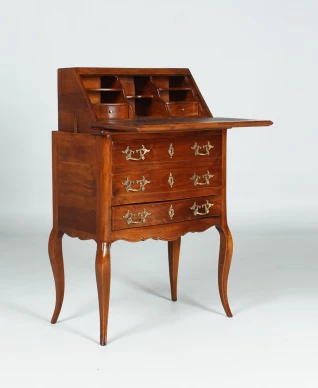
Small antique transformation table
France
Walnut
around 1860

Tabernacle secretary with figural marquetry
Austria
Walnut, plum, maple
Baroque around 1750
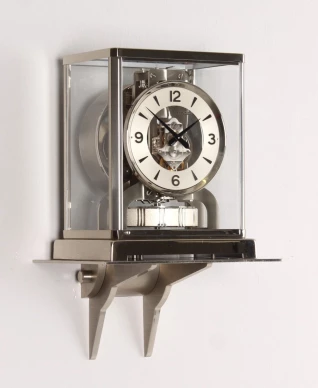
Original silver Atmos clock with wall bracket
Switzerland
Nickel-plated brass
Year of manufacture 1972
